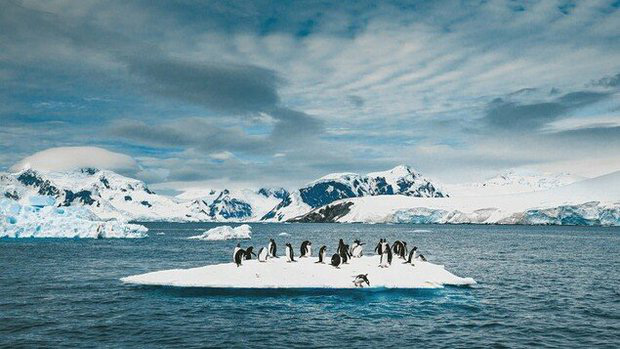The Doomsday Glacier in Antarctica is melting at its fastest rate in 5,500 years, raising concerns about catastrophic sea-level rise and the future survival of the ice shelf.
This discovery comes from a study of prehistoric sediments found along the shores surrounding Doomsday, in the West Antarctic Ice Shelf region. The chilling news is that the ice melt driven by climate change is occurring at the fastest rate in recorded history.
Dylan Rood, an Earth scientist at the Royal Holloway University of London, stated that this sign indicates that the West Antarctic Ice Shelves have fractured at some of the most critical areas, threatening to create a sea-level rise disaster in an increasingly warming world. He also questions whether it is too late to prevent this process.
As one of the fastest melting glaciers in Antarctica, Thwaites is nicknamed the “Doomsday Glacier.” Since the 1980s, Thwaites has lost approximately 595 billion tons of ice, contributing to a 4% increase in global sea levels.

Polar creatures are the first victims of this catastrophic consequence.
Thwaites and its northern neighbor, Pine Island Glacier, cover vast areas; they have surface areas of approximately 192,000 square kilometers (almost the size of the United Kingdom) and 162,300 square kilometers, respectively.
Because the seaward ends of these glaciers are situated on an ocean basin with warm ocean currents flowing through, this accelerates the melting and could lead to their detachment from the massive ice shelf.
Moreover, the melting occurring from below weakens the glaciers and makes them more susceptible to surface fracturing, which can spread throughout the entire ice shelf. If the entire West Antarctic Ice Sheet were to collapse and melt into the sea, it would raise global sea levels by approximately 3.4 meters, enough to submerge many important cities and lands.
Researchers report that from 55 centuries ago until 30 years ago, the amount of ice lost exposed coastlines at a rate of about 3.5mm per year. However, in the past three decades, the rate of sea-level rise has surged to 40mm per year—over 11 times faster.
The scientific community continues to investigate whether this situation can be reversed. Meanwhile, the world is experiencing a “nightmare” summer and record droughts.


















































